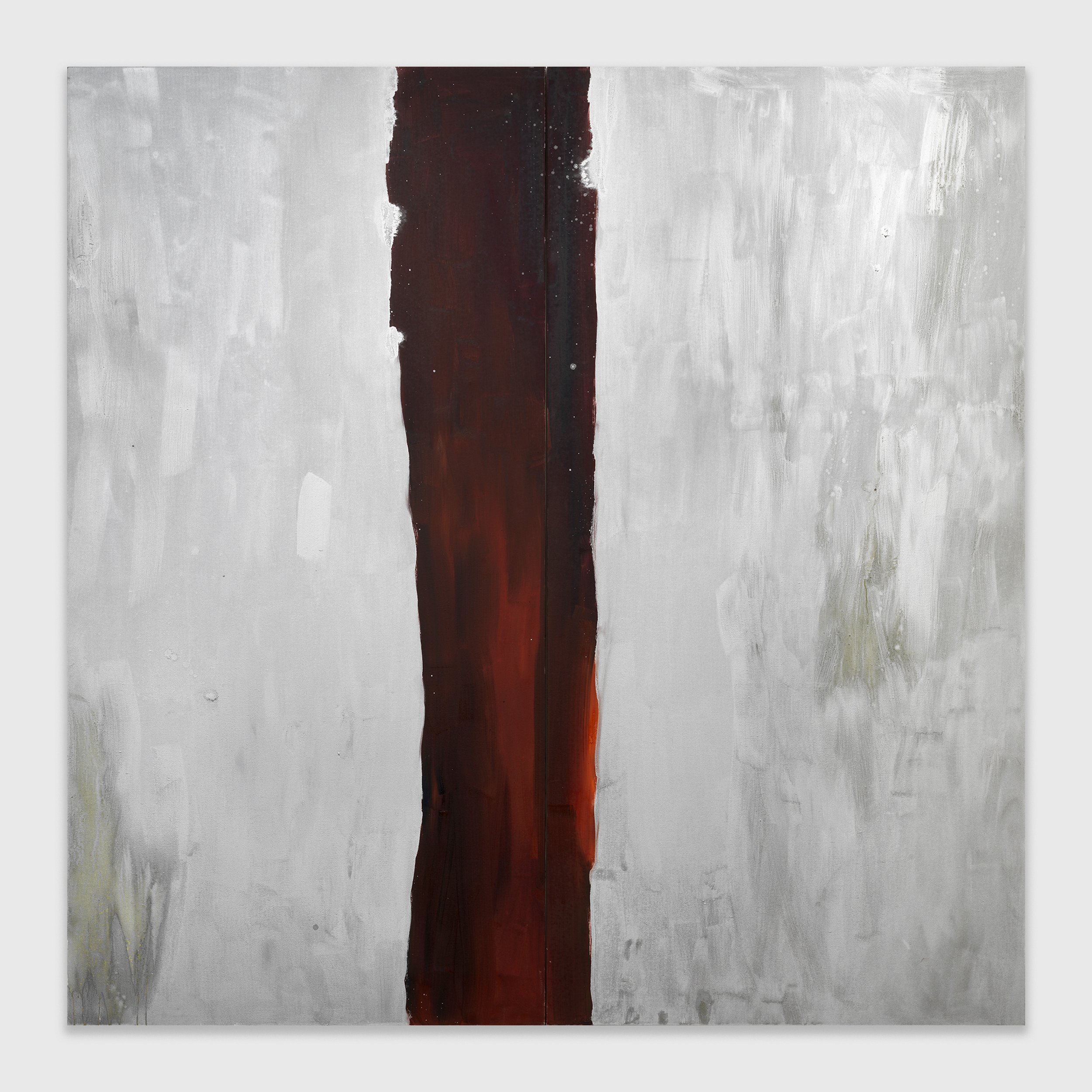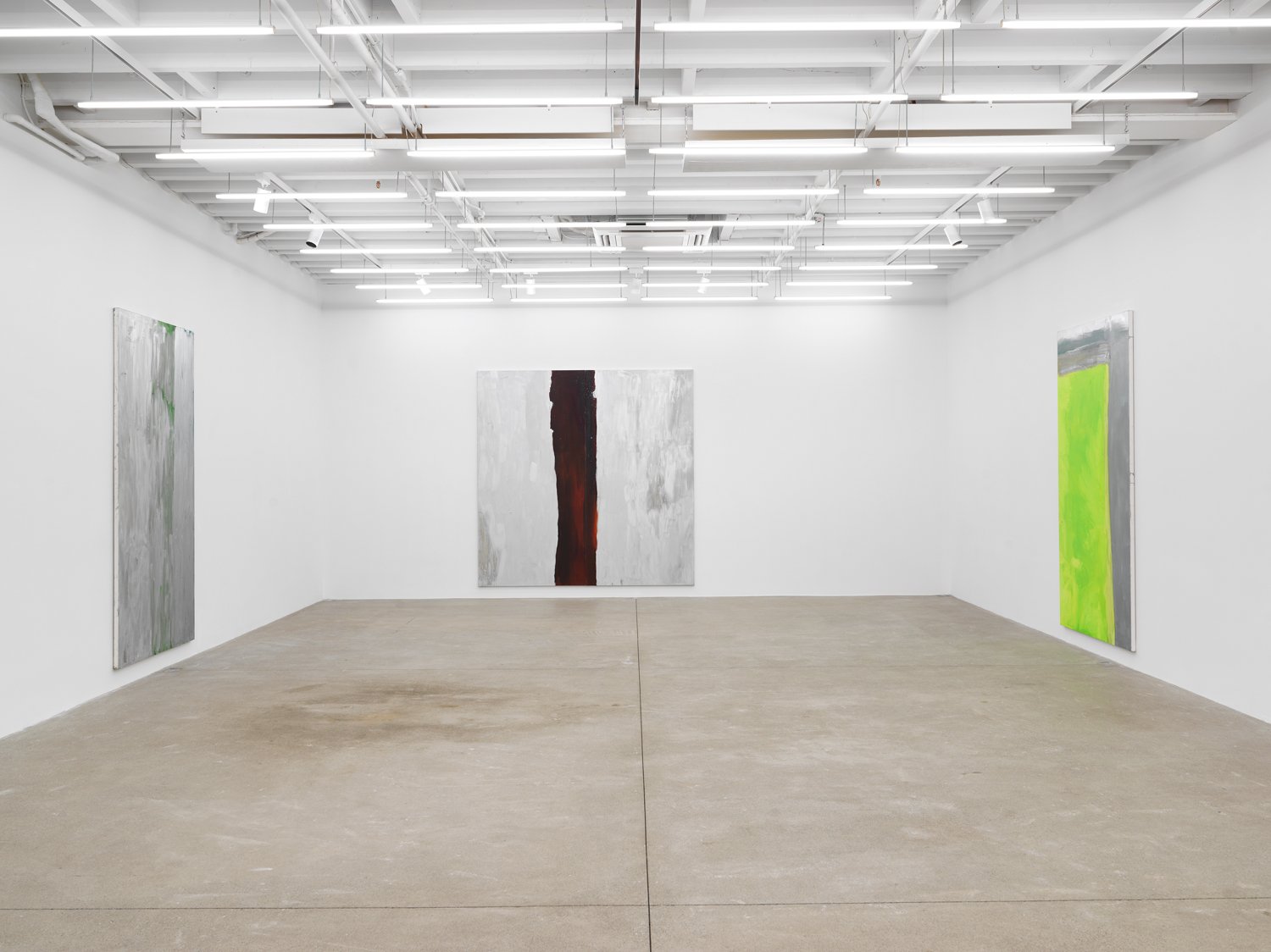Anna Shukeylo on Jane Swavely
Jane Swavely, Silver OID #6, 2022, Oil on canvas, 90 x 90 inches
As you enter the ground floor of Magenta Plains Gallery, you are confronted by a large shimmering diptych with a gestural void. Towering several feet above the head, Silver OID #6 by Jane Swavely is an ode to silver, a curious and complex pigment that is rarely in the palette of a traditional oil painter. This particular painting is Swavely’s tour de force; its fresh, luscious, large-scale strokes transform the rectangle into a charged surface. A deep burgundy vertical section breaks the composition, creating fantastic depth, using pigments that juxtapose transparency with the opacity of the aluminum. Her work tells the story of paint itself through its surface, with evidence of a kind of material timeline present in every mark. This piece is crisp and raw. Its brush strokes convey vigorous motion, giving the work a sense of immediacy, as if the gestural splatters, marks, and stains were only recently completed by the artist. Silver OID #6 simultaneously reinvents Swavely’s own signature expressive painting style and pays homage to abstract expressionism and Rothko’s dark paintings.
Mark Rothko, No. 16, Oil on canvas, 8’ 6” × 9’ 11 1/2”
Swavely has a deep understanding and love for pigment. Her choices are meticulously intentional; optical effects are studied and perfected. Her obsessive love affair with Gamblin silver paint has led her to explore the thrill of clashing painted plains of various applications and opacities. She works this liquid aluminum with mastery, creating a glowing breeze that radiates outward from her large canvas. I am reminded of Rothko’s No.16 (1960) where a silvery effect is achieved through various opacities of juxtaposed pigments. Similar to Swavely's work, Rothko explores certain color combinations over and over again, until the canvas buzzes and sings with energy.
Jane Swavely Installation, Magenta Plains Gallery, February 2024
The fortitude of Silver OID #6 evolves from darkness. That deep maroon/oxide void lures the viewer to step in past the two silver curtains on either side. The image suggests a deep ravine obscuring the mystery of what lies beyond. That paradoxical space imbues Swavely’s painting with a sense of wonder while both the paint and the abstracted content stay fresh. The human eye naturally searches for recognizable shapes in the field of overlapping color. In Swavely’s work, her abstract marks mimic natural forms: part figurative, part landscape. There is a rhythm to the interwoven brush strokes that recall muscular fibers and wood grain while reflecting her figurative roots. The dark crimson opening of the deep form becomes a kind of living tissue.
In some ways, Swavely’s approach to painting is akin to ballet, which is unsurprising given her personal love for the art form. With exceptional discipline and training, she creates paintings that feel effortless and buzz with rhythm. Her physical approach to paint application echo’s Balanchine’s finest masterpieces. I imagine sweeps of dancers’ legs and arms transforming into loose but purposeful brushstrokes. The orchestral accompaniment is almost audible. Through meticulous practice and feeling, Swavely brings abstract expressionism to an exalted place of lyricism.
Anna Shukeylo, Sentiment 4, (Collaboration with MS), Acrylic on canvas, 2023, 40 x 32 inches
Anna Shukeylo is a Russian born artist, curator, educator, and writer. Her current painting series explores the beauty, complexity and chaos of parenthood.




